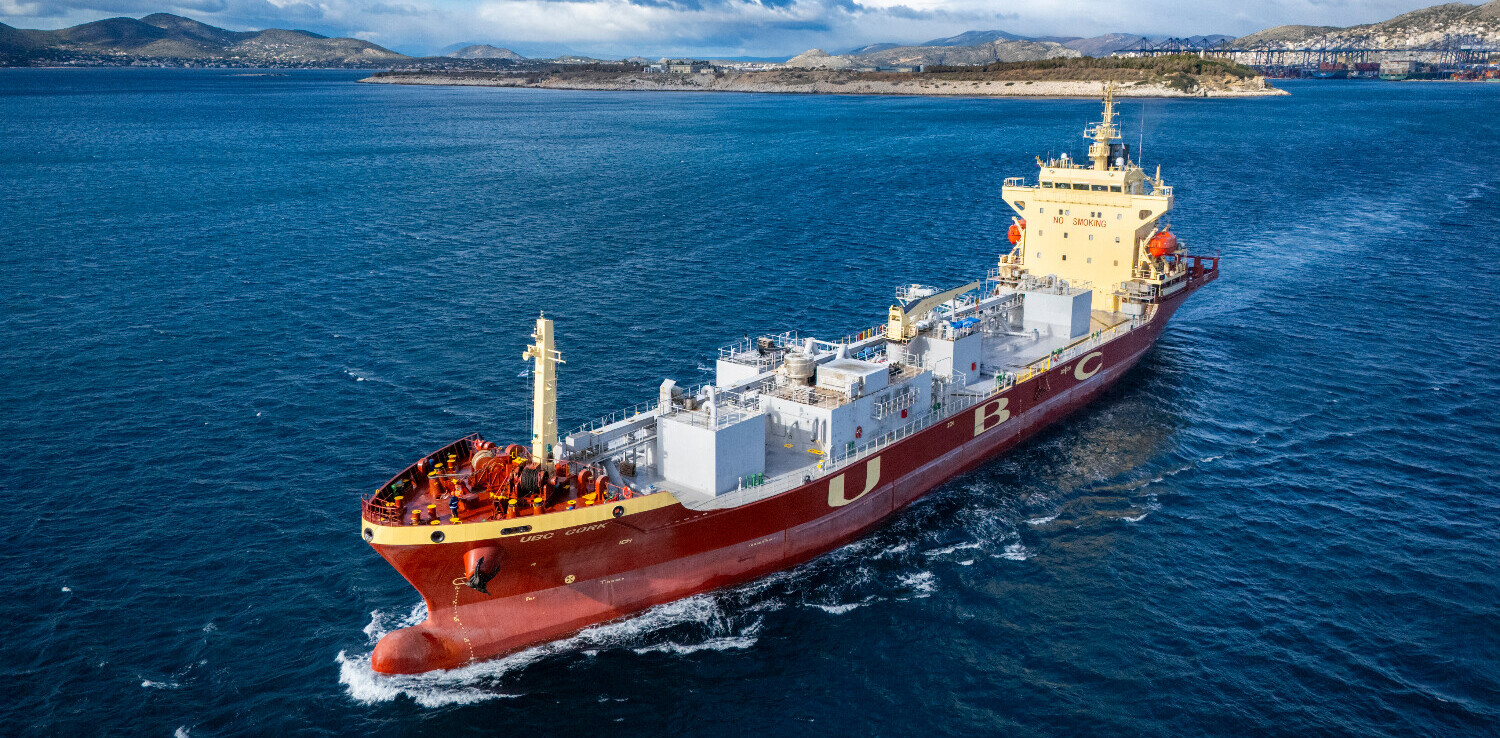
Technological advances in marketing, logistics, and production have meant that companies big and small can benefit from the wider international market of suppliers and consumers. However, internationalization has also come with its own challenges. Global brands are more sensitive to global events that reverberate across their supply chains and reshape consumer habits.
The COVID-19 pandemic brought new challenges to businesses across the globe. Global supply chain disruptions, more people shopping online instead of in stores, and increasing product returns are just a few of the major shifts brands have had to adapt to, in a short space of time.
The war in Ukraine is only expected to exacerbate surging costs, delivery delays and other challenges for companies in Europe. Meanwhile, the global push towards sustainability is influencing both consumers and businesses to rethink their priorities and way of working.
We spoke with three fast-growing Dutch ecommerce scaleups from Techleap.nl’s Rise program about how businesses can stay agile and adapt in uncertain times.
Adapting to global supply chain disruptions
Supply chain disruptions have impacted products as diverse as toilet paper to computer chips, with shortages being driven by factory shutdowns, shipping challenges, and new consumer behaviors (people buying to try at home and returning at a higher rate). While some product categories have largely recovered, others continue to experience significant disruptions and shortages.
In an interview, Wiebe Konter, CEO of Optiply, warns that changing consumer behaviors mean it will likely take years before the supply chain fully recovers. At the same time, varying responses to the pandemic and other global challenges can result in significant disruptions simply based on where a business’ suppliers are based.
To alleviate this, Optiply recommends companies to differentiate both their suppliers and transport options. By utilizing suppliers from different parts of the world, businesses can better balance profit margin and delivery time, as well as make use of more transportation options (ship, train, air, road, etc.) to maintain product availability.
Of course, relying on a larger number of international suppliers will also make inventory management even more complex. That’s where the need for more efficient technology and insights will be essential. Optiply’s platform helps users to automate a large portion of their supply chain related tasks and use data to optimize their purchasing and stock inventory decisions.
One important piece of advice Konter shared was to:
… watch out for the bullwhip effect. Did consumer behavior change, or is there just some scarcity now, and is that the reason why everyone is stocking up? If this is the case, then supply chains tend to overproduce and there will be a time when the market is flooded. Prices will go down and you don’t want to be that company that stocked up when prices were high during this short time of scarcity.
Making returns a smooth process
During lockdown, as more customers shopped online, the rate of returns for products also increased. In the United States alone, consumers returned over $400 billion of merchandise in 2020, including $101 billion during the holiday period, in part because the rate for online returns more than doubled. In 2021, retail returns took a massive jump increasing to $761 billion.
Many businesses around the world simply weren’t prepared for this. The volume of returns could prove overwhelming at times, resulting in delayed processing and increasing costs. Worse still, this created additional friction with customers who were already dissatisfied with their initial purchase. As Quinten Muller, co-founder of Returnista explains:
Webshops are spending a lot of time, money, and energy on acquiring consumers, but once the product they receive is not to their liking or has a defect, the process for both merchants and consumers becomes quite difficult — consumers don’t really know what to do and merchants are not really getting the information out of the returns process that they need.
Muller and his co-founder built Returnista to alleviate this difficulty — they offer a streamlined returns process for customers taking them step by step through the process, but also with a focus on converting returns into exchanges. For example:
Once you order a size M, and you say ‘that’s a size too large,’ we instantly offer you a size S so that within the return flow you can exchange and be happy knowing the right product is on the way. That’s a good experience for you as the consumer, but for the merchants it’s an even better experience. They sell more because their returns are being changed to exchanges.
In this scenario, the business would still experience tighter margins from processing the return and sending a replacement item. However, this is much better than a product that is simply returned and refunded, which results in a greater financial loss.
Along with streamlining processes, the platform also provides data companies can use to optimize their returns strategy.
When it comes to building a great customer experience, returns is something that usually comes at the bottom of the list of priorities. But, as Muller explained, now that people are becoming more and more accustomed to ordering online, creating a great returns experience should be a priority for more companies. Those that do will have a leg up in retaining loyal customers, even when an order doesn’t initially go as planned.
Using tech to fulfill the need to ‘try before you buy’
Some product lines are inherently better equipped to handle returns and supply chain disruptions than others. Industries such as home furnishing (which saw a major boom during the pandemic when people were stuck at home), have a harder time with this simply due to the size of the products involved. At the same time, the pandemic greatly accelerated online buying, even for categories that typically involve a more intensive decision-making process.
This is a problem that Itai Gross, CEO of furniture and home decor brand Naduvi, aims to solve by using new technology to help consumers with a “try before you buy” mindset.
“People are just getting used to buying more of their home goods online,” he explained. “Technological developments will enable that even more. AR, VR, and the metaverse — all of them will facilitate the customer journey for larger items.”
And Gross believes this technology will evolve quickly over the next few years.
The pandemic led people to have a greater focus on their home and living and that pushes us to accelerate all kinds of tech solutions which will facilitate customers having a much better customer journey. [For example] today we’re sending thousands of samples of fabrics to potential customers who want to see or feel the color, but probably in a couple years they’ll also be able to have the ‘sitting experience.’ I’m not sure yet how that will work, but I’m confident it will be solved in the future. At the moment, for other categories like tables or chairs, you can just ‘place’ the table in your living room [in VR or AR] to see how it fits and even change the color.
These tech solutions help reduce returns and give online buyers greater confidence in making what is often considered to be a more high-end purchase. As customer buying preferences continue to shift toward digital, these tech tools further facilitate frictionless experiences.
A stronger focus on sustainability is another major change influencing the way both consumers and brands view and manage their supply chains.
The dependency of shipping companies and container prices have increased the realization that logistics is a major part of the value chain and therefore has a great impact on both consumer prices and emissions of goods produced in Asia and consumed in Europe. Every company should try to understand and diminish the impact.
In my industry (Home & Living) brands are relocating their production facilities to Europe. I believe that this development will sustainably change the supply chain. Although labor costs are more expensive in Europe, the advantages of faster deliveries and more control on labor conditions are significant and, once the benefits are more apparent, the trade off vs production in Asia becomes different.
Preparing for an uncertain future …
If there is one thing that is “certain” for businesses, it’s uncertainty. There are many factors that are beyond business’ control right now. A proactive approach in handling these issues and taking steps to better meet customer expectations will prove crucial for maintaining their loyalty and support, even when things aren’t going perfectly.
As businesses learn to adapt their operations and scale in a way that reduces disruptions to serving their customers and getting products to them in a timely manner, they will be well equipped for whatever the future might hold.
Get the TNW newsletter
Get the most important tech news in your inbox each week.






